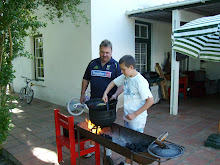When some people hear the word "Twitter," they automatically think of wasting time. After all, how can you have time for work when you're telling people what you had for lunch, or spreading the gossip from your 2 p.m. staff meeting? It's true that Twitter can be a distraction. But it can also be an important resource for both personal and organizational growth.
Twitter is a social networking site that allows users to connect with each other and send short messages, or "tweets," about what they're doing or thinking. Imagine that! What if the school assigned a learner to an educator or vice versa, an educator assigned to an individual or number of learners to monitor their daily activities? Your "followers" would see your tweets in a rolling feed, called a timeline, when they log into the service on their arrival at school.
Each educator could decide what they want to tweet. Tweets can be trivial - "what someone ate for breakfast" example - or they can be significant and valuable, for example, when they highlight key news, or articles from the school.
Here are some tips to help you learn the lingo of ‘tweeeting’
Hashtag - (#) can help people track different topics to find information easily. Simply put the # symbol in front of your tweet's most relevant word, or use it to "tag" a tweet under a certain category. For example, #leadership or #football.
Followers - These are your friends or connections - the people who are following your tweets. Your tweets will appear on their timelines. But please remember, all tweets are technically "public" and searchable unless you decide to make your account private. Be careful what you say.
@ Replies - If you want to tweet to someone else, use @ right before that person's username. For example, tweet "@mary45 I saw your tweet. Interesting!" - and mary45 will get the message in her timeline (if she follows you).
If you put the person's name at the very start of the tweet, as in the example above, only you, her, and people who follow both of you will see the Tweet in their timelines. If you put her name elsewhere in the message, everyone who follows you will see the tweet. For example, this would happen if you tweeted "Me and @mary45 are working on a new matric dance proposal."
Use a strong headline - Most followers simply scan Twitter, so your "headline" should be effective and authentic enough to capture their attention. Keep it short -
Twitter allows only 140 characters, so your messages must be simple yet powerful.
Write clearly - Use the same good writing rules you would use when writing any professional document. Grammar and style - and proofreading - still matter with Twitter.
Keep it useful - If you tweet a link or share an article, make sure it's something that your followers will find useful or valuable. Get “tweeting”...
Subscribe to:
Post Comments (Atom)

No comments:
Post a Comment